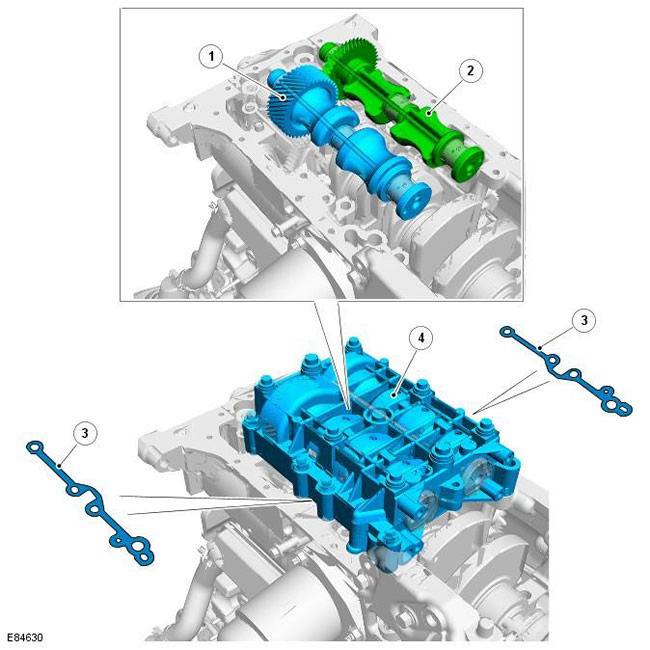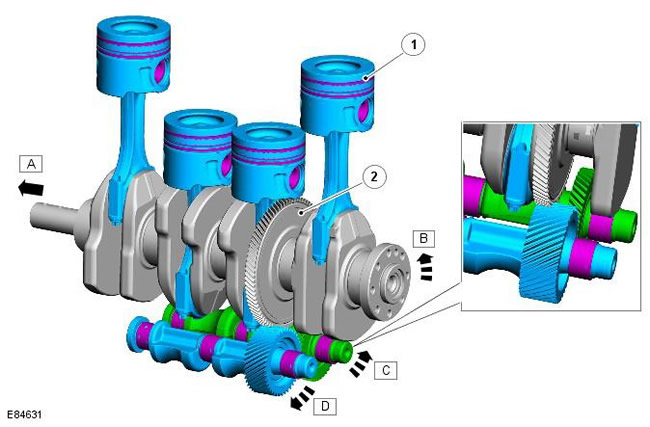
| Pos. | spare part no | Name |
| 1 | - | Counter-rotating balance shaft |
| 2 | - | balance shaft |
| 3 | - | Adjustment plate |
| 4 | - | Balance shaft housing |
The balancing system consists of two balancing shafts and is located under the crankshaft. The system assembly is attached with 8 bolts to the bottom of the cylinder block. Each of the two shafts is combined with a helical drive gear and is precision machined and balanced as a matched assembly. Elements of the balancing system are not allowed to be disconnected.
The body of the balancing system serves as a place for installing the oil pump. The port at the front of the housing connects to the oil supply port from the oil sump. The more distant port on the top of the body connects to the port in the cylinder block. Pressurized oil from the oil pump passes through a port in the balance housing and cylinder block to the oil filter/oil cooler assembly.
Balance shaft drive

| Pos. | spare part no | Name |
| A | - | Front of the engine |
| B | - | Direction of rotation of the crankshaft |
| C | - | Balance shaft rotation direction |
| D | - | Direction of rotation of counter-rotating balance shaft |
| 1 | - | Piston #1 |
| 2 | - | Balance shaft drive gear |
A forged helical drive gear on the crankshaft drives the balance system. The crankshaft drive gear has twice as many teeth as each of the balance shaft gears, so the two balance shafts rotate at twice the speed of the crankshaft. The crankshaft gear drives a counter-rotating balance shaft that rotates towards the crankshaft. The other balance shaft is driven by a counter-rotating balance shaft, in the same direction as the crankshaft.
The adjusting plate is located between each side of the body of the balancing system and the skirt of the cylinder block. Adjustment plates are available in various thicknesses and are used to provide the required clearance between the crankshaft drive gear and counter-rotating shaft gear. The gap between each balance shaft gear can be checked, but the gaps are not adjustable.
The rotating balance shafts create an opposing force that compensates for the unbalancing forces generated by the reciprocating engine elements. Imbalance occurs in a 4-cylinder engine when pairs of pistons move in opposite directions while the engine is running. To counteract the opposing forces of the twin pistons, the weight of the balance shafts must be at bottom dead center (NMT), when the pair of pistons is at TDC.
The balance system is splash oil lubricated.
Comments on this article